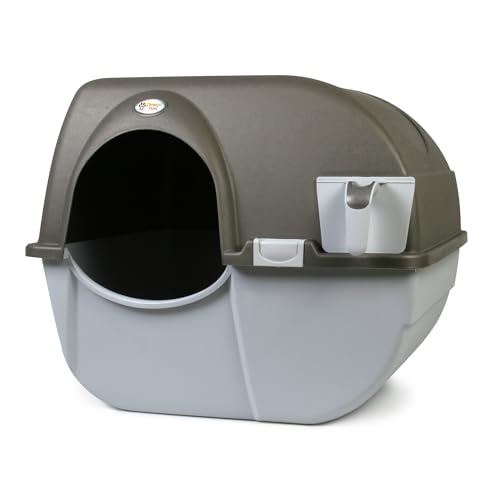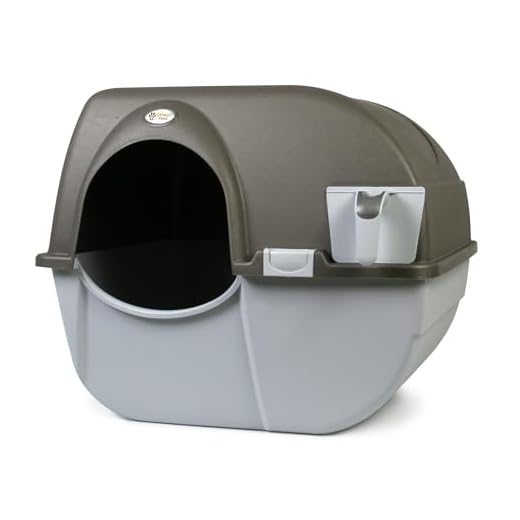



When I leave a surprise on the floor instead of using my designated area, it often indicates a need for immediate attention. First, check the cleanliness of my designated area; if it’s not fresh and tidy, I’m unlikely to use it. A quick scoop and change of litter can make a world of difference.
Next, consider the type of substrate I’m stepping on. Some prefer finer textures or specific scents, while others might be sensitive to fragrances or dust. Experimenting with different options can help identify what I find most comfortable.
Health issues can also play a significant role. If I’m experiencing discomfort, it may lead to avoidance of my usual spot. A visit to the vet can rule out any underlying medical concerns. Keep an eye on other behaviors, such as changes in appetite or energy levels, as these can provide clues.
Finally, environmental factors matter too. Stress from changes in the household, new pets, or even loud noises can disrupt my routine. Creating a calm and safe space can encourage me to return to my designated area. Understanding these factors will help foster a happier and healthier environment for both of us.
Common Medical Issues Leading to Litter Box Aversion
Frequent urination or straining can indicate urinary tract infections or bladder stones. If you notice changes in bathroom habits, a vet visit is necessary for proper diagnosis and treatment. Immediate attention can prevent complications.
Gastrointestinal Disturbances
Diarrhea or constipation often leads to discomfort, causing reluctance to use designated areas. Dietary adjustments or medications prescribed by a veterinarian can alleviate these issues. Regular monitoring of eating habits will help identify any changes early.
Arthritis and Mobility Issues
Older individuals may experience joint pain, making it challenging to access specific locations. Providing easily accessible alternatives, such as low-sided containers, can encourage continued use. Consultation with a veterinarian can guide pain management strategies, improving overall mobility.
Environmental Factors Influencing a Feline’s Bathroom Behavior
Cleanliness of the surroundings significantly affects where I choose to relieve myself. A dirty or poorly maintained area can lead to aversion, causing me to seek alternative spots. Regularly scooping out waste and washing the litter container helps ensure a welcoming environment.
Type of substrate matters too. Some prefer clumping or non-clumping options, while others might find certain textures uncomfortable. Experimenting with various materials can reveal what is most appealing.
Location is critical. If my private space is too noisy, busy, or in a high-traffic area, I may feel anxious and opt for a more secluded spot. Finding a quiet, safe corner can encourage proper habits.
Household dynamics, such as the presence of other pets, can create stress. If I feel threatened by a companion, I might avoid my designated spot altogether. Creating separate areas for each pet can alleviate tension.
Temperature plays a role as well. An overly cold or hot environment can make me reluctant to use my designated area. Maintaining a comfortable climate is vital for my wellbeing.
Any changes in the home, like moving furniture or new scents, can disrupt my routine. Consistency is key; keeping my area familiar helps me feel secure. Always consider the impact of household plants too. For instance, you can check if certain ones, like amaryllis, are safe for me by visiting are amaryllis safe for cats.
Attention to these factors can enhance my comfort and encourage the right habits. A little effort goes a long way in ensuring a harmonious living arrangement.
When I leave a surprise on the floor instead of using my designated area, it often indicates a need for immediate attention. First, check the cleanliness of my designated area; if it’s not fresh and tidy, I’m unlikely to use it. A quick scoop and change of litter can make a world of difference.
Next, consider the type of substrate I’m stepping on. Some prefer finer textures or specific scents, while others might be sensitive to fragrances or dust. Experimenting with different options can help identify what I find most comfortable.
Health issues can also play a significant role. If I’m experiencing discomfort, it may lead to avoidance of my usual spot. A visit to the vet can rule out any underlying medical concerns. Keep an eye on other behaviors, such as changes in appetite or energy levels, as these can provide clues.
Finally, environmental factors matter too. Stress from changes in the household, new pets, or even loud noises can disrupt my routine. Creating a calm and safe space can encourage me to return to my designated area. Understanding these factors will help foster a happier and healthier environment for both of us.
Common Medical Issues Leading to Litter Box Aversion
Frequent urination or straining can indicate urinary tract infections or bladder stones. If you notice changes in bathroom habits, a vet visit is necessary for proper diagnosis and treatment. Immediate attention can prevent complications.
Gastrointestinal Disturbances
Diarrhea or constipation often leads to discomfort, causing reluctance to use designated areas. Dietary adjustments or medications prescribed by a veterinarian can alleviate these issues. Regular monitoring of eating habits will help identify any changes early.
Arthritis and Mobility Issues
Older individuals may experience joint pain, making it challenging to access specific locations. Providing easily accessible alternatives, such as low-sided containers, can encourage continued use. Consultation with a veterinarian can guide pain management strategies, improving overall mobility.
Environmental Factors Influencing a Feline’s Bathroom Behavior
Cleanliness of the surroundings significantly affects where I choose to relieve myself. A dirty or poorly maintained area can lead to aversion, causing me to seek alternative spots. Regularly scooping out waste and washing the litter container helps ensure a welcoming environment.
Type of substrate matters too. Some prefer clumping or non-clumping options, while others might find certain textures uncomfortable. Experimenting with various materials can reveal what is most appealing.
Location is critical. If my private space is too noisy, busy, or in a high-traffic area, I may feel anxious and opt for a more secluded spot. Finding a quiet, safe corner can encourage proper habits.
Household dynamics, such as the presence of other pets, can create stress. If I feel threatened by a companion, I might avoid my designated spot altogether. Creating separate areas for each pet can alleviate tension.
Temperature plays a role as well. An overly cold or hot environment can make me reluctant to use my designated area. Maintaining a comfortable climate is vital for my wellbeing.
Any changes in the home, like moving furniture or new scents, can disrupt my routine. Consistency is key; keeping my area familiar helps me feel secure. Always consider the impact of household plants too. For instance, you can check if certain ones, like amaryllis, are safe for me by visiting are amaryllis safe for cats.
Attention to these factors can enhance my comfort and encourage the right habits. A little effort goes a long way in ensuring a harmonious living arrangement.
When I leave a surprise on the floor instead of using my designated area, it often indicates a need for immediate attention. First, check the cleanliness of my designated area; if it’s not fresh and tidy, I’m unlikely to use it. A quick scoop and change of litter can make a world of difference.
Next, consider the type of substrate I’m stepping on. Some prefer finer textures or specific scents, while others might be sensitive to fragrances or dust. Experimenting with different options can help identify what I find most comfortable.
Health issues can also play a significant role. If I’m experiencing discomfort, it may lead to avoidance of my usual spot. A visit to the vet can rule out any underlying medical concerns. Keep an eye on other behaviors, such as changes in appetite or energy levels, as these can provide clues.
Finally, environmental factors matter too. Stress from changes in the household, new pets, or even loud noises can disrupt my routine. Creating a calm and safe space can encourage me to return to my designated area. Understanding these factors will help foster a happier and healthier environment for both of us.
Common Medical Issues Leading to Litter Box Aversion
Frequent urination or straining can indicate urinary tract infections or bladder stones. If you notice changes in bathroom habits, a vet visit is necessary for proper diagnosis and treatment. Immediate attention can prevent complications.
Gastrointestinal Disturbances
Diarrhea or constipation often leads to discomfort, causing reluctance to use designated areas. Dietary adjustments or medications prescribed by a veterinarian can alleviate these issues. Regular monitoring of eating habits will help identify any changes early.
Arthritis and Mobility Issues
Older individuals may experience joint pain, making it challenging to access specific locations. Providing easily accessible alternatives, such as low-sided containers, can encourage continued use. Consultation with a veterinarian can guide pain management strategies, improving overall mobility.
Environmental Factors Influencing a Feline’s Bathroom Behavior
Cleanliness of the surroundings significantly affects where I choose to relieve myself. A dirty or poorly maintained area can lead to aversion, causing me to seek alternative spots. Regularly scooping out waste and washing the litter container helps ensure a welcoming environment.
Type of substrate matters too. Some prefer clumping or non-clumping options, while others might find certain textures uncomfortable. Experimenting with various materials can reveal what is most appealing.
Location is critical. If my private space is too noisy, busy, or in a high-traffic area, I may feel anxious and opt for a more secluded spot. Finding a quiet, safe corner can encourage proper habits.
Household dynamics, such as the presence of other pets, can create stress. If I feel threatened by a companion, I might avoid my designated spot altogether. Creating separate areas for each pet can alleviate tension.
Temperature plays a role as well. An overly cold or hot environment can make me reluctant to use my designated area. Maintaining a comfortable climate is vital for my wellbeing.
Any changes in the home, like moving furniture or new scents, can disrupt my routine. Consistency is key; keeping my area familiar helps me feel secure. Always consider the impact of household plants too. For instance, you can check if certain ones, like amaryllis, are safe for me by visiting are amaryllis safe for cats.
Attention to these factors can enhance my comfort and encourage the right habits. A little effort goes a long way in ensuring a harmonious living arrangement.










